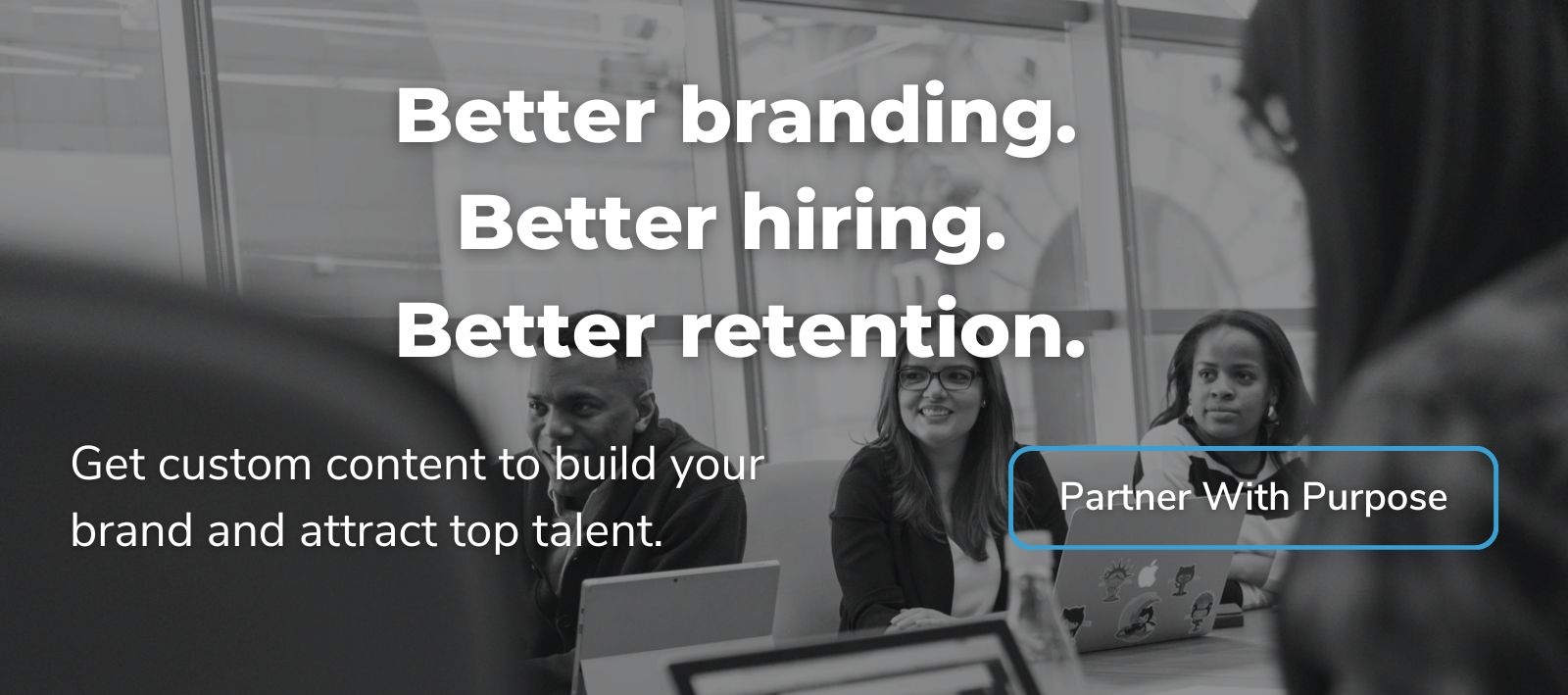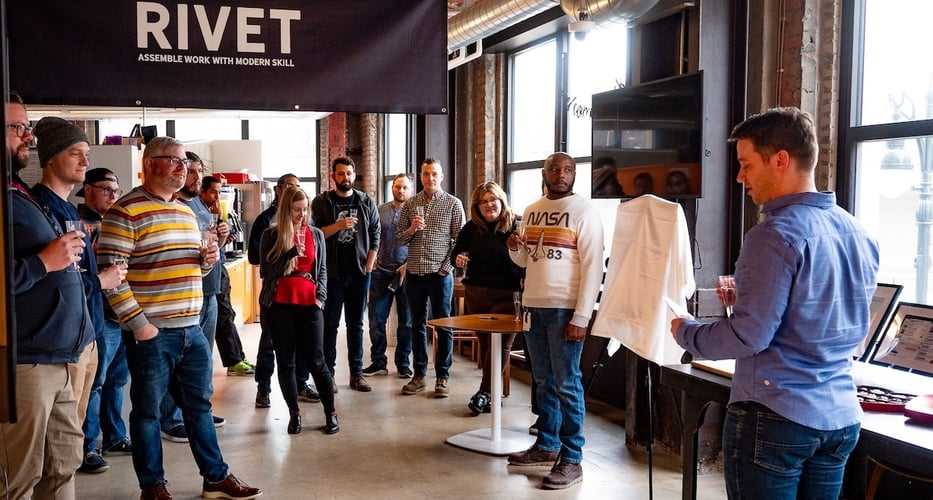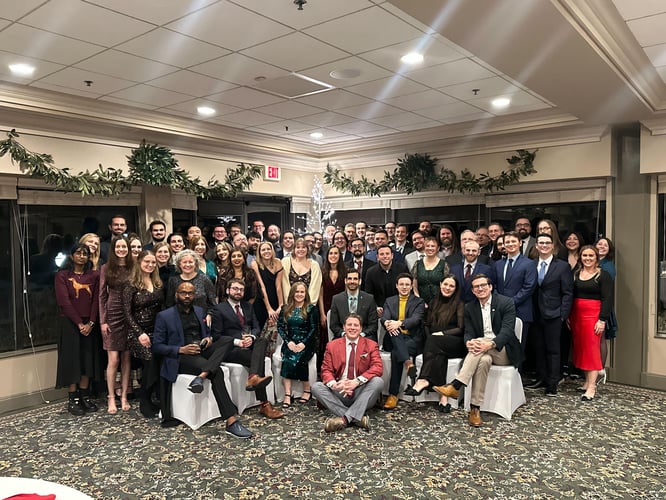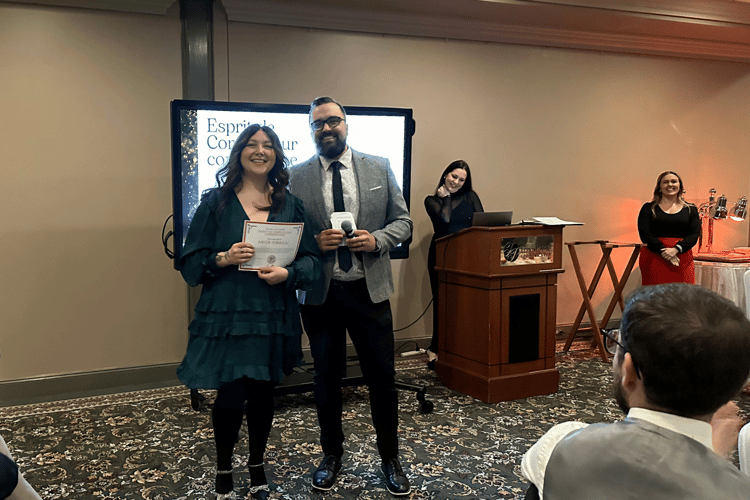It’s been over a year since the murder of George Floyd launched the country into a time of racial reckoning. For many, it was more than a moment (to quote Hamilton, “this is not a moment, it’s the movement.”) But for many, momentum has fallen.
Progress takes time. Figuring out how to promote diversity and inclusion in the workplace can be challenging. But what matters is that we always keep trying.
We thought we’d bring back some amazing insight from our panel on diversity and inclusion to, as one of our panelists said, “Keep that same energy.” To keep that momentum going, we’re talking about how to recruit diverse candidates, diversity and inclusion training, and how to keep a diversity and inclusion plan going for the long term.
Why Diversity Is Important in the Workplace
Why is diversity important in the workplace? Studies have shown that diverse workforces not only offer opportunities for historically marginalized and oppressed people groups but also improve company financial performance. Companies that want to create the best products and services for a growing diverse population need to hire diverse people.
We are at a historic moment of change for the American workforce, as well as globally. While there are many challenges that need to be worked out, we also have a real opportunity to make lasting change for more diverse workplaces and for a more equitable society in general.
Dan Green, Talent Acquisition Manager at Avionos, talked about these lasting changes at the panel on diversity and inclusion. He suggested breaking down institutions or situations into individual components to examine each one for opportunities for change.
“This idea of race is really baked into everything our institutions are supposed to be working on, protect, or promote,” Dan said. “Until we have an opportunity as a society to look at race and try to figure out why these things are so baked into our everyday lives, I’d like us to delve into each of these particular issues and give them the respect that each of them deserves on their own. If you look at the institutions, there are so many different aspects to them. We have to break that up and look at it individually—race, gender, LGBTQ+, etc.”
Kendra Mitchell, Chief of Staff at Duo Security, echoed that once we do that, we can start to see systemic change:
“I’m really interested in what sort of societal systemic change can happen. For example, what might it look like to create and manifest just cities? How might we reallocate funds for education, mental health, affordable housing, etc.? While we think about the inequality that exists outside of our doorsteps, for those of us in corporate America, I’d really like to think about what it means to build just companies that are centered on belonging, inclusion and equity,” Kendra said.
How To Recruit Diverse Talent
So how can we break down these complex issues? Dan, Kendra, and fellow panelist Dan Ngoyi had some great ideas at the panel discussion that we want to revisit. When it comes to the workplace, there are some specific ways you can create a plan to recruit more diverse talent, and keep your team accountable by measuring results.
1. Look At Your Company Values
Look at your company’s plan for hiring and see if your company’s stated values align with the reality of your hiring. How might you make some changes to build an action plan?
2. Co-Create a Plan
Diversity and inclusion requires team buy-in. Kendra encouraged people to co-create a plan and design it with their leaders and teams so that there’s a sense of buy-in and agency as you create a more holistic view of what your company needs.
3. Recruit From New Pipelines
Tech loves to recruit from certain tech hub cities or universities known for talent, but many of those locations are not accessible to people without the economic or social opportunities to be in those places. Kendra recommends recruiting from places such as coding bootcamps, where people without equal access to tech networks can be found.
How To Promote Diversity and Inclusion in the Workplace
Kendra also said that it’s important to not only hire diverse talent, but manage them in an inclusive way once you get them in the door.
“Once you have folks in your organization, they need to be put up for promotion and leadership roles where they can grow and develop into it. And I think that will yield greater benefit for underrepresented minorities who are often told, 'No,' they can’t have access to an opportunity because they lack the experience. I think that happens to women a lot, too. It shuts them out of leadership, and I’m really passionate about diversity in leadership,” Kendra said.
Examine Internal & External Strategy
If you created plans for growing diversity at your company, that’s great. It’s always good to revisit your strategies and policies to help identify new opportunities for DEI awareness and change. Dan N. presented a 6-point plan created by Quicken Loans and Rock Central that looks at the following elements:
-Recruiting
-Team member engagement
-Leadership development
-Government affairs
-Law enforcement engagement
-Communication plans both internally and externally
Look at diversity not just as a hiring issue but as an internal and external strategy for helping team members, training leadership, and employee engagement.
How To Keep Diversity and Inclusion Plans Going Long Term
One of the realistic concerns of many activists after the social justice movements of 2020 is that many corporations will make temporary changes and fall off over time. And many employees report they don’t feel optimistic about their company’s DEI efforts.
It’s important to make a long-term plan to keep diversity and inclusion strategy in the mix permanently.
Track Your DEI Results
Dan G. emphasized the importance of tracking results long term, so plans don’t fall off over time. Track your diversity and inclusion plan like you do your business plan, with objectives and deadlines to be achieved.
“There has to be measures put in place to ensure permanence,” Dan G. said. “It’s really about being consistent, setting up measures and making sure it’s sustainable over time.”
Engage Your Employees
It’s important to keep your employees updated on your DEI plans, strategies and successes. You don’t always have to have the answers, but you should let your team know that you’re always trying to work on it. Invite your team to help, too. Share ways they can get involved in the process as well. During a time when many people are considering leaving their current role, it’s more important now than ever to make sure you’re engaging with employees, keeping them in the loop, and inviting them to the table.
Engage Your Community
Suggestions varied on how to bring the entire community together to create change, from donations to social justice causes to partnering with nonprofits. Whichever way you have the resources to go, make sure you’re engaging your community as you create long-term plans to have everyone on board with suggestions, support, and effort.
Looking for a new talent pool to tap into? Build and execute a top-notch employer branding strategy with Purpose Jobs to attract top talent.
For more DEI resources, check out the recap of the panel on diversity and inclusion.
Dan Green, Talent Acquisition Manager at Avionos - Dan has been in talent acquisition and recruiting throughout his whole career. Got into the diversity and inclusion space when he started focusing on women in tech specifically. He really found his passion in this work—helping underrepresented groups help find a voice. Ever since he’s always made a conscious effort to help the companies he was working at develop diversity and inclusion initiatives and strategies.
Kendra Mitchell, Chief of Staff at Duo Security at Cisco - Prior to becoming Chief of Staff of Duo Security in March of 2019, Kendra held a leadership position on Duo’s legal team. As Assistant General Counsel, Kendra worked on every aspect of Duo’s Operations—privacy, security, compliance, employee relations. Before coming to Duo, she was General Counsel at HITLAB, a healthcare innovation and technology company that examines the way we can leverage technology to improve healthcare outcomes worldwide. She also worked at Sidley Austin law firm (where Barack and Michelle Obama met) and is a proud graduate of Hampton University, an HBCU, as well as Harvard Law School.
Dan Ngoyi, Director of Talent Acquisition at Rock Central - Dan began with Quicken Loans before transition to Rock Central, one of the newest Rock Family startups. His journey with Diversity and Inclusion started 4 years ago when they were a “ragtag group of folks” trying to figure it all out. When he started with Quicken Loans in 2013, they were about 4,000 people. Now they’re about 25,000 people strong. Dan calls it a “journey that’s constantly growing and evolving.”







.png?width=50&name=Erin%20Gregory%20(1).png)

